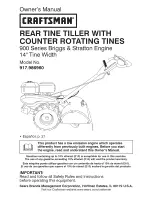
44
ARTC-SVX001B-EN
N
NO
OT
TIIC
CE
E
E
Eq
qu
uiip
pm
me
en
ntt D
Da
am
ma
ag
ge
e!!
F
Fa
aiillu
urre
e tto
o rre
em
mo
ov
ve
e m
mo
oiissttu
urre
e ffrro
om
m ssy
ysstte
em
m cco
ou
ulld
d
cca
au
usse
e cco
orrrro
ossiio
on
n w
wiitth
hiin
n tth
he
e cch
hiilllle
err//h
he
ea
atte
err
cco
om
mp
po
on
ne
en
nttss,, a
an
nd
d d
de
eg
grra
ad
de
e p
pe
errffo
orrm
ma
an
ncce
e..
P
Pe
errffo
orrm
m v
va
accu
uu
um
m e
ev
va
accu
ua
attiio
on
n o
off ssy
ysstte
em
m tto
o rre
em
mo
ov
ve
e
m
mo
oiissttu
urre
e..
Low Pressure Bypass
A control that uses a time delay that temporarily
bypasses the low-pressure switch for cold weather
start up. Once the delay opens (times out) the normal
controls are put back on line within the control circuit.
Low Pressure Pump Down (LPPD) Controls
Allows the system to start in low ambient conditions
and prevents flood-back to the compressor by pumping
the liquid refrigerant out of the evaporator. The LPPD
control consists of a pressure switch that is set at “cut
in” and “cut out” pressures that depend on the type of
refrigerant in the system and is based on pressure at
which the refrigerant reaches the freezing point of the
evaporator water/glycol mixture.
The set points are typically just below the freezing
point. For R410A refrigerant and using water, the
pressure is set at a 90 psi “cut out” (corresponding to
50 °F (10 °C)) and a 105 psi “cut in” (corresponding to
40 °F (4.4 °C)) cut in. For any other water/glycol
mixture, contact Trane technical support for proper set
points.
High and Low Ambient Controls
Condenser coils must be properly oversized for high
ambient operation (or high elevation). Some chiller
modules must be required to operate in low ambient
temperatures to prevent refrigerant migration to the
condensing coil. Without good condenser head
pressure control, insufficient refrigerant is fed to the
evaporator and will cause low suction pressure,
evaporator freezing and will ultimately shut down the
chiller. Flooded condenser head pressure control, fan
variable frequency drive, and fan cycling are all used to
allow varying degrees of low ambient operation.
Thermal Capacity
The thermal capacity of the chiller modules is
dependent on the leaving temperature of the chilled
water/glycol mixture, maintaining a minimum flow of
water through the evaporator and keeping debris out of
the air-cooled condenser. In applications where it is
desired to operate with a lower flow rate or higher
temperature change, consult the technical support for
recommendations.
















































